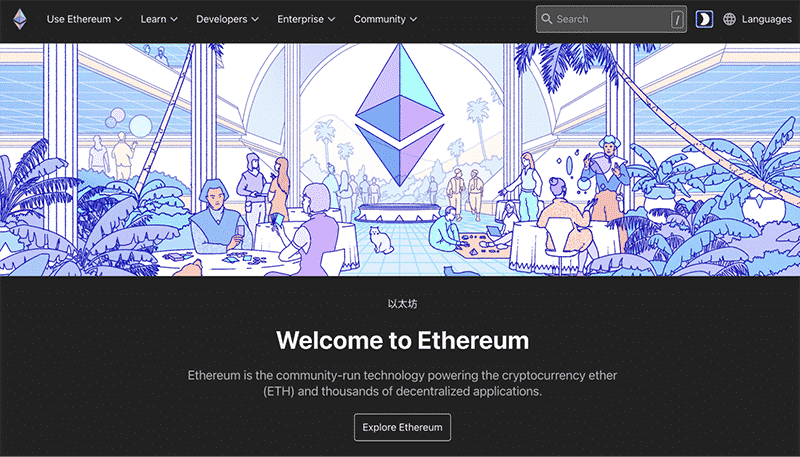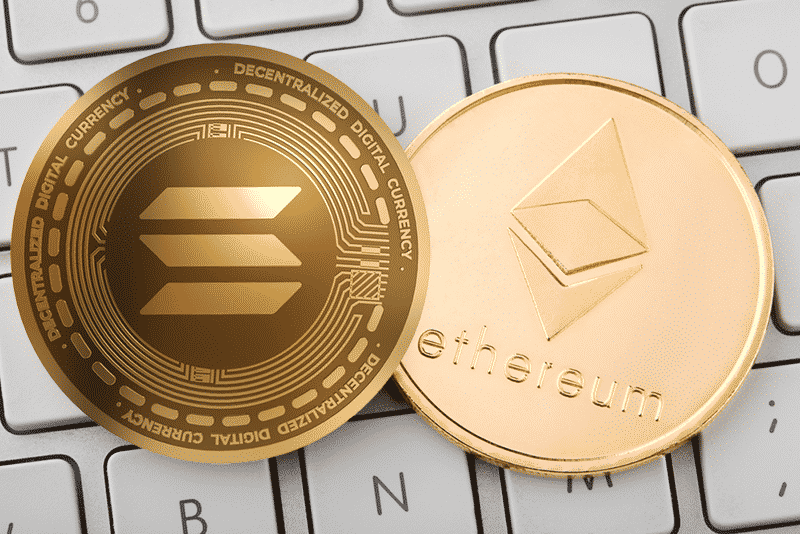There’s no question Ethereum has been an industry veteran for some time now. Aside from Bitcoin, it’s perhaps the most significant and impactful cryptocurrency project ever created.
With so much influence, it’s only natural that many other blockchains have entered the space to emulate its massive success. Over the years, this has led to the concept among enthusiasts and investors of ‘Ethereum killers.’
Such a sentiment isn’t about dominance but about the blockchains improving on some of Ethereum’s severe shortcomings like slow network speed and high transaction costs.
There are several so-called ‘Ethereum killers’ like Cardano, Binance Smart Chain, Polkadot, and, of course, Solana (SOL), the latter of which has been dubbed by some as the ‘real Ethereum killer.’
Despite only officially launching in March 2020, Solana’s rise has been meteoric. SOL has increased by around 13000% if accounting for the current year-to-date performance.
Presently, Solana is ranked fifth for most traded cryptocurrencies (according to CoinMarketCap), boasting a market cap of approximately $64.2 billion. One SOL coin currently costs $212, while ETH costs $4236.
So, how has such a ‘newcomer project’ like Solana become so dominant? Are there any differences between it and Ethereum?
Both Ethereum and Solana are decentralized, open-source technologies with similar goals of expanding the horizon of cryptocurrencies beyond just acting as mediums of exchange. Let’s explore more in this article.
What is Ethereum?

Ethereum is a pioneer in the cryptocurrency industry and the first project which popularized the concept of ‘programmable money.’
This ideology refers to using the blockchain for more than just payments; building actual computer programs to execute a host of operations. We refer to these as decentralized applications (dApps).
Ethereum is a community-run, proof-of-work blockchain with application and smart contract functionality. The platform’s utility currency is ETH or ether, used to pay ‘gas’ or transaction fees for fulfilling several operations on the network.
Thus far, thousands of applications like exchanges, tokens, and lending protocols, NFTs (non-fungible tokens) have leveraged part or most of Ethereum’s blockchain to secure their respective platforms.
While Ethereum has a host of co-founders (eight to be precise), Vitalik Buterin is the most popular and acts as the most prominent spokesperson for the project. The genius Russian-Canadian programmer conceived the idea for Ethereum in 2013.
He chose the name ‘Ethereum’ while browsing science fiction elements on Wikipedia and believed Ethereum would be an ‘imperceptible medium’ for cryptographic applications similar to how ether permeates the universe.
After a successful million-dollar crowdfunded initiative in 2014, Ethereum went live on 30 July 2015.
What is Solana?

Solana is yet another open-source, decentralized blockchain for building dApps and smart contracts.
However, it tackles this ambitious goal quite differently from Ethereum. Solana employs the proof-of-stake and proof-of-history consensus mechanisms, allowing it to achieve incredible scalability levels. SOL is Solana’s utility currency.
The project stays true to the title of its whitepaper, ‘a new architecture for a high-performance blockchain,’ published in November 2017. Soon after, Solana held an ICO (initial coin offering), which raised about $25 million.
Solana was founded by the ex-Dropbox, ex-Qualcomm software engineer Anatoly Yakovenko, and Raj Gokal, a former venture investor. It wouldn’t be until March 2020 where Solana came onto the public market.
Like Ethereum, Solana powers several applications (over 400) in the realm of decentralized finance (DeFi), NFTs, Web3, etc.
Key technical differences between Ethereum and Solana
| ETHEREUM | SOLANA | |
| Founders | Vitalik Buterin, Gavin Wood, Charles Hoskinson, plus five others | Anatoly Yakovenko; Raj Gokala |
| Organization | Ethereum Foundation | Solana Foundation |
| Date released | July 2015 | March 2020 |
| Price | $4236 | $212 |
| Ticker symbol | ETH | SOL |
| Programming language | Python, Java, C#, C++, Go, Rust | Rust |
| Consensus mechanism | Proof-of-work (PoW) | Proof-of-stake (PoS); proof-of-history (PoH) |
| Uses | dApps, smart contracts | dApps, smart contracts |
| Scalability | About 15 tps | Up to 65 000 tps |
| Average transaction cost | $20-$70 | $0.00025 |
Ethereum and Solana, both second-generation blockchains, share similar goals of creating smart contracts and decentralized applications.
Yet, the mechanisms for each to achieve such objectives are distinct. Aside from other minor differences here and there, the programming languages and consensus mechanisms are the two distinct elements separating both projects.
Programming languages
Ethereum is written in Python, Java, C#, C++, Go, and Rust. Yet, for developers to write smart contracts, they need to learn Solidity, a framework-specific only to Ethereum.
While developers have familiarity with the likes of Go and Java, Solidity is highly specialized. On the other hand, Solana uses only Rust, a popular general-purpose programming language.
Therefore, the consensus suggests it’s easier to code with Solana than Ethereum, and this might partly be why there’s been a surge of activity on the former.
Consensus mechanism
All blockchains use a consensus mechanism, which is simply a system employed to agree to a single data value within a distributed network.
The two most popular mechanisms in this regard are proof-of-work and proof-of-stake. Ethereum uses PoW (essentially mining), while Solana employs PoS, along with proof-of-history.
Historically, while mining-based ledgers are more secure, they are inherently slower because they require highly competitive, expensive, and energy-consuming computational work.
On the other hand, PoS blockchains are far more scalable and eradicate the high expenses and power consumption experienced by the likes of Ethereum.
To put this into perspective, Ethereum is said to handle about 15 transactions per second, while it’s at least 50 000 with Solana (although it has processed more during busier periods).
PoS is whereby a blockchain autonomously confirms transactions and rewards participants based on their initial stake of the coin in question. PoH is not a consensus mechanism but a system providing a ‘universal synchronized clock.’
In other words, each node relies on one clock, saving time from having others confirm which is the actual time to follow. Therefore, besides proof-of-stake, PoH is another way Solana reduces the time needed to validate transactions.
Final word
So, overall, which is better between Ethereum and Solana? The main benefit Ethereum has over its long-term rival is popularity and first-mover advantage. Solana still has a reputation of being a new kid on the block, although it has given Ethereum a real run for its money.
Solana easily wins when it comes to scalability, cost-effectiveness, programming language ease of use, and environmental friendliness. To compete on most of these factors, the Ethereum Foundation will migrate towards the long-awaited Eth2 or Ethereum 2.0 by introducing sharding and proof-of-stake.
It’ll be quite intriguing to witness which blockchain will be more popular if this transition does eventually occur.



